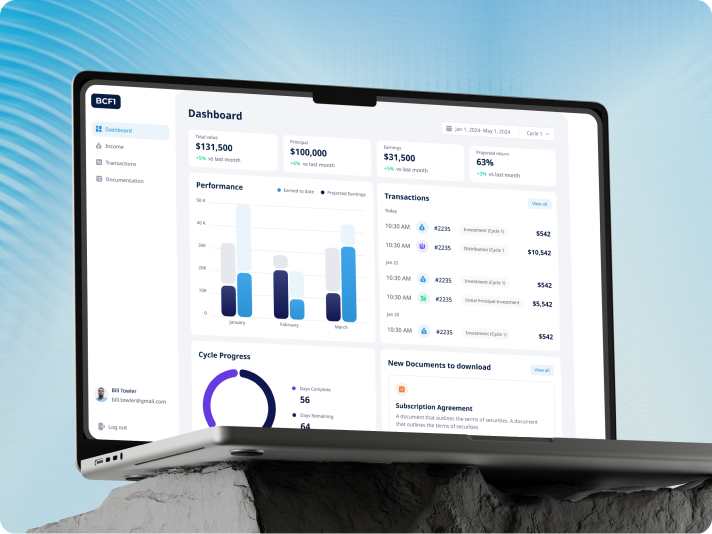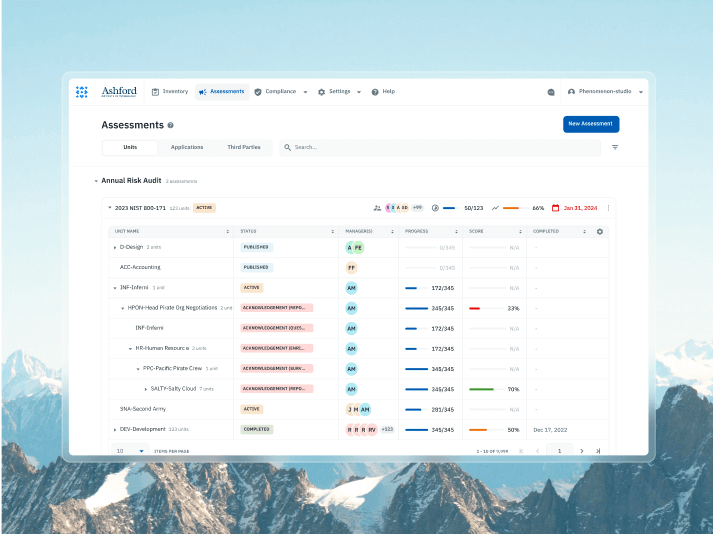









MORE THAN A SAAS DESIGN AGENCY
DESIGNING PRODUCTS FOR STARTUPS BACKED BY



and more
customer satisfaction rate
boost in conversions after redesign
top-tier designers and developers on board
investments raised by our clients
COMMON SAAS DESIGN CHALLENGES
Honestly, our onboarding looked fine in Figma, but once we had different roles and real user data, people just dropped off.
This helps reduce drop-off rates by up to 30% and speeds time-to-value, so your users don’t abandon your platform when complexity grows.
We faced challenges with permissions and data governance. Now our dev team is constantly patching compliance issues.
This minimizes costly reworks, supports compliance, and helps keep your product audit-ready as you scale.
Every new feature felt bolted on. The UX turned messy and slowed the team down.
best SaaS websites design
practices with modular kits that keep workflows consistent, reduce redesign time, and support faster development cycles.This approach makes adding features predictable, cutting integration time by up to 40% as your SaaS grows.
INDUSTRY-SPECIFIC SOLUTIONS WE DESIGN
UX design for SaaS
turns them into easy workflows.

WHAT OUR SAAS DESIGN AGENCY DOES
Map out key features, user flows, and architecture to align your team and reduce risks.
Custom website layouts and UX/UI strategies to improve engagement and conversions.
Modernize your web presence with a digital product design agency that drives engagement and brand authority.
Expand your prototype into a fully functional, production-ready product.
Custom web solutions, from complex platforms to interactive dashboards and scalable SaaS products, designed to boost functionality and drive growth.
Fast and cost-effective product development using no-code and low-code platforms.
Secure and scalable blockchain-based applications, including smart contracts and DeFi solutions.
FEATURES WE DESIGN FOR SAAS PRODUCTS
SaaS homepage design
. Here are some of the features we implement to improve usability and support core product functions:
Smooth first-time experiences that increase activation and reduce early churn.

Clear menus and layouts designed for role-based user journeys.

Modular views for tracking KPIs, actions, and service metrics in real time.

Cards, tables, and charts that turn complex data into actionable insights.

Interfaces for permissions, approvals, and secure multi-user workflows.

Plan selection, usage metering, invoices, and upgrade flows designed for clarity.

Contextual, customizable messaging that keeps users informed without clutter.

Analytics screens with filters and exports for deep operational insight.

Fast, intuitive controls to find data across complex SaaS structures.

Well-structured inputs with validation and autosave to improve data quality.

Secure user roles, groups, and access controls for scalable management.

User-facing controls for preferences, integrations, and system behaviour.

Assignment and tracking interfaces supporting team workflows.

Commenting, shared views, and activity logs to support teamwork.

Embedded chat, help centre access, and contact widgets for user help.
TECHNOLOGY STACK

































SAAS APPLICATION DESIGN TRENDS
Smarter screens supporting chatbots and predictive automation, ideal for B2B SaaS design in sales, health tech, and analytics-heavy platforms.
Tailoring interfaces and workflows to user habits, critical for SaaS application design in marketing automation, HR systems, and customer support tools.
Subtle animated feedback reducing errors, perfect for SaaS dashboard design, fintech transactions, and complex productivity or planning tools.
Natural language and voice-first controls simplifying tasks, valuable for B2B SaaS website design in field services, health, and customer support apps.
Game-inspired progress, rewards, and challenges, boosting engagement in B2B SaaS website designs for learning, onboarding, and internal team management.
Prioritizing privacy, accessibility, and environmental impact, essential for UX design for SaaS serving diverse markets and compliance-heavy industries.

FEATURED CASES
UX design SaaS
experts NJ, USA
NJ, USA
React, Next, Flowbite for ui, Firebase, Tailwindcss, Redux, React Hook Form
6 month
2x faster user onboarding and management
Reduced admin task completion time
Enhanced data accuracy and compliance across all cycles
 USA
USA
Vite, React, Typescript, Zustand, Tanstack Query, React Router Dom, i18next
5 month
60% faster campaign launch
Real-time analytics for smarter optimization
Strengthened competitive position
 Texas, USA
Texas, USA
React, Python, AWS
12 months, ongoing
2x faster user workflows
50% shorter time-to-market
Nominated for UX Design Award 2024

Craig Tortolani
CPO at Dekryption Labs
Alex Friedman
CEO at Open PathNot only is the team extremely communicative, their work is exceptional. I have never worked with a team so talented while also being competitively priced and communicative.

KlickEx Team

George Fry
Founder at NeapThe quality of the designs is fantastic. Phenomenon Studio works at speed and is extremely punctual with timelines. They deliver top-notch outcomes with exceptional designs.

Andre Guerra
Co-Owner at RADCAT Design
Kevin Alvarez
Founder & General Partner, PredictivePhenomenon Studio's ability to translate concepts and rough design mock-ups into high-fidelity assets, designs, and visuals was very impressive. The goal was to maintain simple elegance in the design aesthetic, and they did it very well.
HOW TO WORK WITH US
fintech website design
and development needs- Founders who want a senior team thinking beyond sprints
- Startups scaling beyond MVP and needing deep product ownership
- Expert team aligned with your roadmap, KPIs, and business goals
- Strategic discovery, UX systems
- MVPs or feature builds with a defined goal and launch window
- Pre-seed and seed startups that need to ship without building an in-house team
- UI/UX, development, QA, and PM in one dedicated team
- Clear scope, fixed timeline, efficient delivery
- Startups needing specialized expertise without long-term hiring
- Seed & Series A+ startups looking to accelerate development
- Embedded designers, developers, or product managers to fill skill gaps
- Faster product delivery without the hiring delays & overhead costs
Why choose us for your B2B SaaS design and development?
Since 2019, we’ve gained HIPAA and GDPR certifications and industry recognition, delivering hundreds of products in Healthcare, SaaS, FinTech, and EdTech — where compliance and UX go hand in hand.
Our work looks sharp today and stays usable tomorrow — designed around long-term value, not short-term gimmicks. Scalable systems, brand consistency, and smart UX that grows with your product.
Every component is built with devs in mind: design tokens, accessibility, reusability, and real-world constraints. We collaborate with your team, reuse existing elements, and stay involved until everything’s live.
Collaborate with UX strategists in North America, while our senior design and development teams in Europe deliver fast, consistent results. We integrate into your tools and workflow, working as part of your team — from a single embedded designer to a full product squad.
Award-Winning Product Design, Recognized Worldwide
others
Related services
your B2B SaaS design
Upgrade legacy interfaces with scalable, business-driven UX and Ul from a top-notch design agency.
FREQUENTLY ASKED QUESTIONS
answered
SaaS design is the practice of creating the user interface (UI) and user experience (UX) for software-as-a-service applications delivered via the cloud. Unlike single-purpose apps, SaaS products often serve diverse user roles, handle complex data, and support ongoing subscriptions, all of which demand thoughtful, scalable design.
At its core, SaaS design focuses on structuring workflows, screens, and interactions to make the product intuitive, efficient, and consistent across devices. This includes planning SaaS homepage design for marketing and onboarding, dashboards for tracking key data, role-based permissions, billing interfaces, and responsive layouts. A good SaaS design company doesn’t just make screens look polished; it ensures real user needs drive layout choices, navigation logic, and visual hierarchy.
For example, UX design SaaS work might involve mapping onboarding flows that reduce churn or designing dashboards that prioritize the most critical metrics for each role. Designers consider data density, user permissions, notifications, and real-time updates, all while maintaining a cohesive brand experience.
Ultimately, SaaS design is about creating a product that not only functions well but is easy to learn, reduces errors, and supports long-term customer retention. Working with an experienced SaaS design agency like Phenomenon Studio ensures your platform can grow and evolve without sacrificing clarity or usability, keeping your users engaged and your business competitive.
SaaS product design goes beyond making software look appealing; it’s about structuring the entire user experience to support real business goals, workflows, and user needs. Unlike single-use apps, SaaS products often include complex role management, multi-step onboarding, data-rich dashboards, billing, and subscription management.
SaaS product design involves understanding these challenges upfront, then creating interfaces and systems that solve them in a clear, consistent way. For example, an effective SaaS homepage design isn’t just marketing; it’s carefully crafted to communicate value, convert visitors, and guide them into onboarding smoothly. Similarly, dashboard design must balance data density with readability, ensuring users can act on insights without getting lost in complexity.
An experienced SaaS design company will focus on modular design systems and component libraries that enable faster feature rollouts without breaking consistency. They’ll also embed accessibility, responsive layouts, and localization support from the start, avoiding costly reworks down the line.
Investing in professional UX design SaaS practices helps reduce churn by improving usability, reducing error rates, and supporting user goals effectively. This isn’t about making things look trendy; it’s about solving business problems with design that can scale as your product grows. When you work with a trusted design agency like Phenomenon Studio, you’re not buying screens; you’re investing in a product experience that supports adoption, retention, and sustainable growth.
Designing a SaaS application starts with understanding your users, their roles, and the workflows they need to complete. Unlike simple apps, SaaS platforms often support multiple user types—admins, managers, customers—each with specific permissions and goals. That’s why thoughtful SaaS architecture design is critical from the start.
A typical design process begins with research and mapping real user journeys. This step identifies friction points and uncovers opportunities to simplify onboarding, task flows, and data presentation. UX design SaaS work involves defining clear navigation, intuitive layouts, and responsive interfaces that adapt across devices. For example, a high-end <h2>SaaS website design agency</h2> knows that role-based dashboards must highlight the most relevant metrics without overwhelming users.
Prototyping and testing come next. Here, designers create interactive mockups to validate assumptions before investing in development. Collaboration with development teams is essential to ensure designs are feasible, accessible, and performant.
An experienced SaaS website design agency also considers marketing needs, ensuring the SaaS homepage design is aligned with the overall product experience.
Ultimately, designing a SaaS application is about balancing user needs, business goals, and technical realities. Working with skilled SaaS designers helps teams build modular, scalable interfaces that evolve over time without sacrificing clarity or usability.
Designing a SaaS product requires a strategic, user-centred approach that balances business goals, user workflows, and technical constraints. The process typically starts with deep discovery work, understanding your target users, their pain points, and the tasks they need to accomplish. This informs the overall SaaS architecture design, ensuring role-based access, permissions, and workflows are planned from the ground up.
A good design process includes wireframing, prototyping, and usability testing to validate ideas before development. For example, mapping onboarding flows reduces early churn, while providing a clear dashboard design ensures users can see and act on key data without confusion. Responsive layouts are also critical, supporting access across devices without sacrificing usability.
UX design SaaS isn’t just about interface visuals; it’s about creating logical, consistent experiences that scale as new features are added. Design systems and reusable components help maintain consistency across teams and sprints, reducing maintenance costs and development time.
Partnering with a skilled SaaS website design agency ensures your product benefits from proven design practices and industry experience. From a compelling homepage that drives signups to in-app workflows that retain customers, professional design turns complex SaaS ideas into usable, valuable products that can grow with your business.
Designing SaaS architecture is about planning the foundation that supports your product’s usability, scalability, and maintainability. It starts with understanding user roles and permissions to define how data flows securely between different parts of the system. Role-based access control (RBAC) is a core consideration in SaaS architecture design, ensuring users see only what they need while maintaining compliance and security.
Another key factor is designing modular, service-oriented components that can evolve independently. This approach enables teams to roll out new features without breaking existing functionality—the best SaaS websites design practice. Frontend design systems and reusable components also play a role, maintaining UI consistency while supporting rapid development cycles.
From a user-facing perspective, planning SaaS homepage design and onboarding flows early ensures marketing and product experiences are aligned. Designers work closely with engineers to translate user journeys into technical architecture, covering everything from API design to data storage strategies.
Effective UX design SaaS work here means mapping real workflows and reducing unnecessary complexity. Instead of hard-coding assumptions, thoughtful architecture allows configuration and customization without constant redevelopment.
Ultimately, designing SaaS architecture is a collaboration between product, design, and engineering teams, laying the groundwork for a scalable, user-friendly platform that can adapt to changing needs over time.
Designing SaaS software means creating user experiences that are intuitive, scalable, and adaptable to evolving business needs. Unlike traditional software, SaaS platforms often serve multiple user roles, handle real-time data, and support subscription models. It starts with research—understanding users’ goals, pain points, and workflows to ensure every screen and interaction supports real tasks.
A strong design process includes planning modular UI components and consistent patterns that reduce development time and maintenance costs. Designers work on homepage design for marketing and conversion, onboarding flows to reduce early churn, and dashboard design that presents key metrics clearly.
Collaboration between SaaS designers and development teams is critical. Good design isn’t just attractive—it’s developer-ready, with clear specs, design tokens, and accessibility considerations baked in. Prototyping and user testing help validate assumptions before full-scale build, saving both time and SaaS costs down the line.
Partnering with a SaaS website design agency ensures your product benefits from industry best practices, avoiding common pitfalls like bloated features or confusing navigation. The result is a SaaS platform that delivers a consistent, efficient user experience while remaining flexible enough to support new features and business models over time.
SaaS cost
for design and development?The SaaS cost for design and development can vary widely depending on product complexity, team experience, timeline, and scope. There’s no universal price tag for building a high-quality SaaS platform because each project has unique requirements.
For example, simple MVPs with limited features and one or two user roles can be designed and developed at a lower SaaS cost, while full-featured platforms with complex dashboards, role-based access, and integrations require more investment. Enterprise SaaS products often involve additional layers like permissions management, security audits, and regulatory compliance, all of which impact cost.
Key factors influencing SaaS cost include research and discovery time, number of unique screens or workflows, responsive design needs, accessibility standards, localization requirements, and the need for a consistent, scalable design system. Investing upfront in solid design reduces long-term SaaS costs by preventing costly redesigns and ensuring developer-ready deliverables.
Working with a professional SaaS design agency or SaaS website design agency ensures you’re not only paying for attractive UI but for well-planned, developer-friendly design that reduces handoff friction and accelerates build timelines. While prices can range from tens of thousands to over a hundred thousand dollars for complex projects, the goal is always to balance quality, maintainability, and return on investment.
The best SaaS websites design balances marketing goals, product education, and trust-building while guiding visitors smoothly toward conversion. Unlike typical brochure sites, SaaS websites must clearly communicate what the product does, who it’s for, and why it’s worth trying—all without overwhelming or confusing potential users.
A key element in the best SaaS website design is clarity: strong messaging paired with an intuitive layout ensures visitors immediately understand the product’s value proposition. Visual hierarchy and consistent branding reinforce credibility, while clear calls-to-action support trials, demos, or signups. Responsive design is essential, ensuring the experience is equally effective on mobile and desktop.
Effective SaaS websites also integrate product UI previews or animations to help prospects visualize the experience. Testimonials, case studies, and security assurances further build trust, especially important for B2B buyers. Good design doesn’t just look appealing; it reduces friction by anticipating objections and answering questions upfront.
Finally, modern design systems enable consistent styling across marketing pages, onboarding flows, and the app itself, ensuring users have a seamless experience from site visit to in-app use. Investing in thoughtful website design isn’t about vanity: it’s about conversion, retention, and setting the stage for a long-term customer relationship.
Partnering with experienced designers ensures your SaaS site isn’t just attractive but functional, strategic, and ready to grow with your product.
Prioritizing features in SaaS product design is one of the most critical steps for creating a successful, maintainable platform. It starts with aligning on your core value proposition: What real problem your software solves for users. Too many products fail because they try to be everything to everyone, creating bloated, confusing interfaces that slow adoption.
A solid prioritization approach typically combines user research, business goals, and technical feasibility. User interviews, surveys, and analytics help uncover which workflows are most essential. Teams often use frameworks like MoSCoW (Must-have, Should-have, Could-have, Won’t-have) or RICE (Reach, Impact, Confidence, Effort) to score and rank ideas objectively.
Collaboration between design, product, and engineering teams is also crucial. Designers contribute insight into usability and workflows, while engineers evaluate technical dependencies and risks. This shared understanding helps avoid surprises during development.
Prototyping and user testing further validate priorities before committing to a full build. Instead of assuming a feature is valuable, you can observe how real users respond and refine the experience early.
Finally, strong SaaS teams treat prioritization as an ongoing process. User needs, competitive landscapes, and business goals evolve over time. Regular reviews and backlog grooming ensure the roadmap stays focused on delivering maximum value without accumulating unnecessary complexity that increases costs and slows growth.
Have a project in mind?
Let's chat
discuss?

mind?








